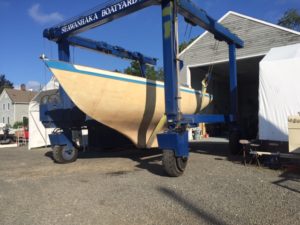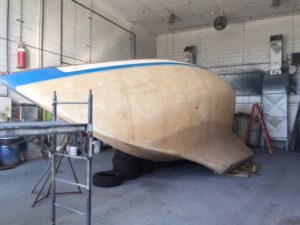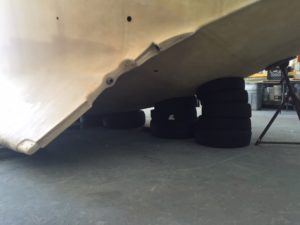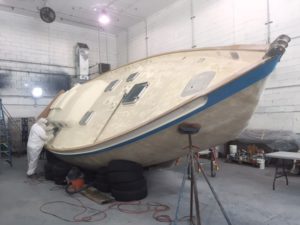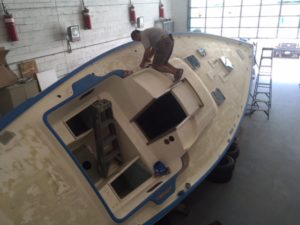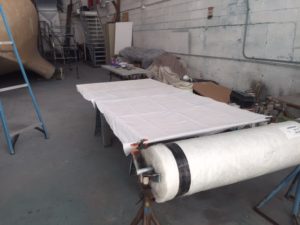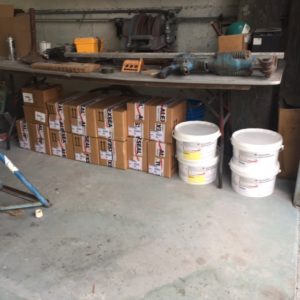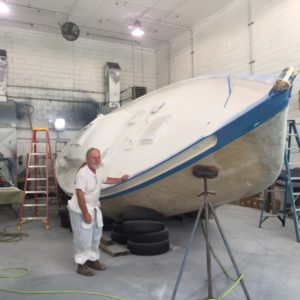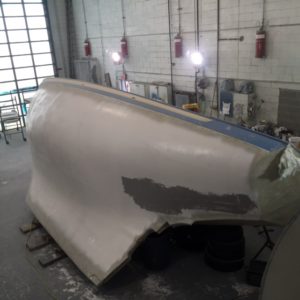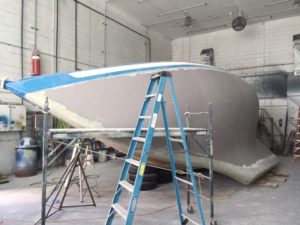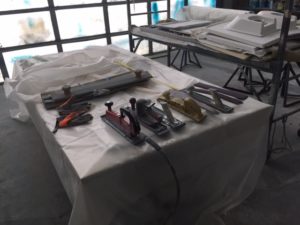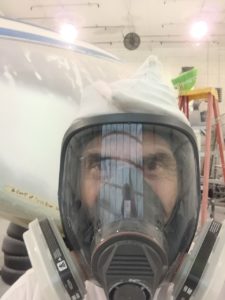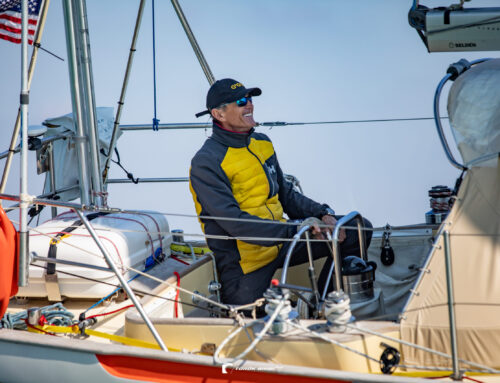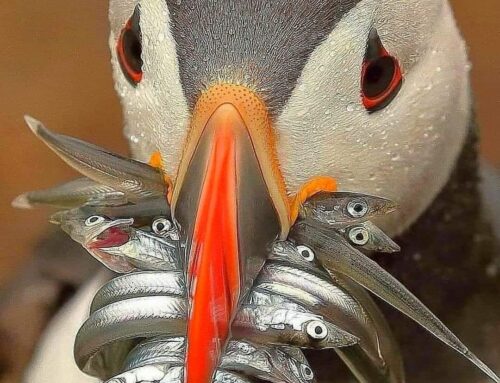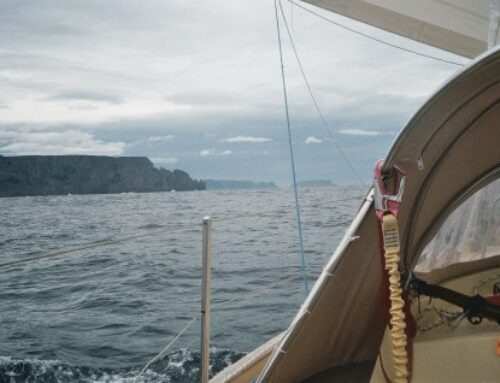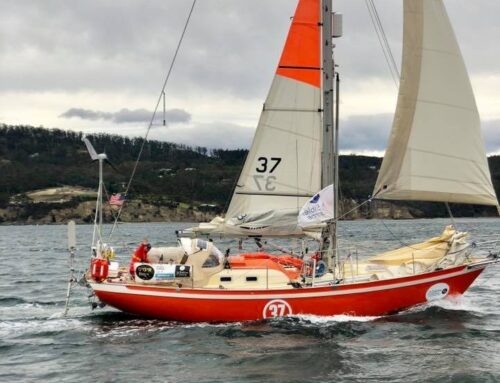At long last, after three brutal weeks of work, Puffin got “naked” (stripped of her bottom paint, gelcoat, etc.), and headed inside to the paint shop.
I have been working off of a shoestring budget, and every move in any boatyard is costly, so must be carefully calculated… In addition, I have never done a project like this, i.e. adding extra lamination to the entire hull and making sure it is done right. The first problem is the considerable weight of the E 1708 Biaxial Fiberglass cloth with ¾-ounce mat backing. One roll (100 yards) of 50”-wide cloth weighs 224 lbs., so how on earth would we be able to keep this heavy material in place on a vertical topside—and even worse, on the bottom of the boat, which curves backwards—while the resin was kicking in?
I had no idea how we would tackle this challenge. Then one night, like a dreamcatcher, I had the epiphany to lay the boat down on her side on car tires!
After Captain Bob Satory (the Seawanhaka Boatyard Manager) and Glenn Van Cott (the shop foreman) approved my idea, I set out on a car tire repo mission. Good people are supporting good causes it seems; Mark DeNatale offered his truck, and Charlie Bifulco, Jr. (the co-owner of All Weather Tires in Huntington Station) gave me 2 dozen used tires for free!
August 3 was an unusual day in Puffin’s life. She rolled into the shop by travel lift, and after a cautious and painstaking 1.5-hour process, she lay on her starboard side supported by tires strategically distributed to spread the load on her hull.
I had gotten the ordered material in the meantime (220 yards of 50”-wide fiberglass cloth, 35 gallons of Sea Hawk-brand resin, and a long list of other required materials). Puffin will gain some extra weight for sure, but I hope the reinforcement will pay off!
My next challenge was to use the right catalyst for the Sea Hawk resin. Luckily I had already done some experimenting with the product the previous week while I was laminating the deteriorated lazarette in the cockpit. The ultra-slow catalyst proved too slow. As Mark Andres (the very helpful NE Rep of Sea Hawk Paints) warned me, it’s designed for the Caribbean! But now I had to mix for a much larger volume, and the pot life of the epoxy is significantly shorter with the increased mass. And I cannot afford any waste!!!!
Well, as with everything, practice makes perfect. After a couple days our lamination trio—Glenn, Janos, and I—got the hang of it, and in spite of the record heat we managed to finish the port side lamination after 3 days. The bow, keel, and transom got several extra layers, and the rest of the hull 2 layers of E 1708 Biaxial Fiberglass cloth with the ¾-ounce mat backing and 1 layer of 7.5-oz. Plain Weave E glass. We used up 15 gallons of resin and innumerable calories of our own energy and motivation…
We needed a break, and Janos had to return to Florida. I escorted him home, since my anniversary with my wife was approaching on August 12. Naturally, I took the opportunity to meet up with my friend Gary Bass, who made Puffin’s new fuel tank, freshwater tank, and bowsprit reinforcement beyond my highest expectations (which is not easy to do). We came up with a new version of reinforcement on the standing rigging chainplates, and Gary took on the job of making them by the end of September.
I got back to Puffin on August 16, by which time Glenn had already primed the deck and the port side. Now we had to eliminate the bumps in the lamination caused by the uneven gel coat removal (peeling/sanding) and overlaps of the fiberglass layers. Well, this was not fun either! Fortunately, Alastair Smith, the NE rep of Alexseal—one of my great sponsors—sent the necessary material, and instructions with it! The 2-component Alexseal epoxy filler is very user-friendly! It’s easier to work with than Awlgrip, and of excellent quality. But longboarding the hull is still an intense endeavor; trust me, you do not have the desire to go to the gym for a while after doing this.
To be continued in Part 4…


